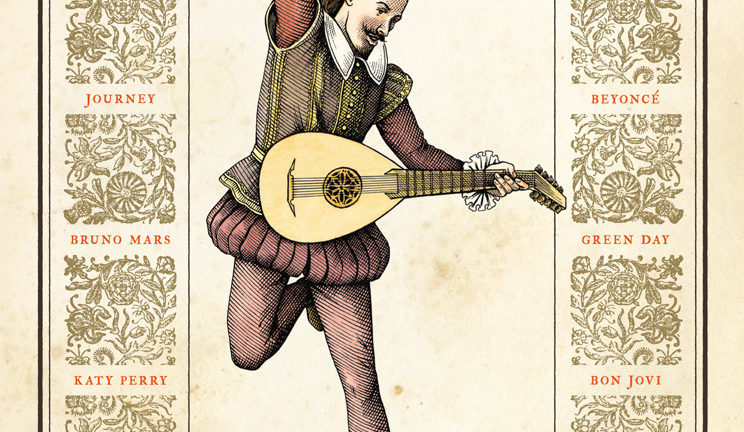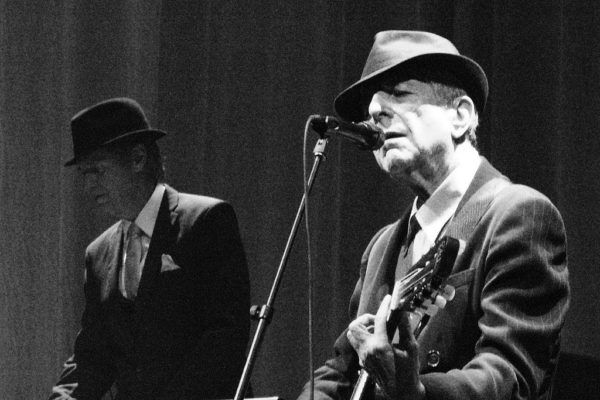The sixteenth-century rewriting of pop hits as an artistic expression
Poetry comes from the Greek ποίησις, poiesis, and means creation. It is an artistic expression according to which, a certain choice of words is arranged following the metric laws that agglomerate them with each other. It is, in a nutshell, a semantic composition of verses and phonemes that follow a sort of musicality. Music, on the other hand,it is art of conceiving and producing, through the use of special instruments, voice included, an organized succession of sounds that are pleasant to the ear. More technically, music consists in the organization of sounds, noises and silences over time and in space.
Sometime in history, poetry and music began to move alongside, following the flow where one would accompany the other
Poetry and music have crossed paths for a long time, one has some of the qualities of the other. Together they developed the concept of song, a type of composition developed for the people, with medieval roots. Just think of Provençal poetry, medieval poetry, or even simply popular poetry – the storytellers, turned into songwriters in modern times. But the two expressions in verse are not to be considered identical, they follow different rules and are not always used for the same purpose. For a long time their relationship has been debated, almost as if there were a struggle between the arts. Where should be elected the most valid “means” to transmit the message behind verses. Luckily, modern times, the talent of the artists and the objectivity of the facts want that, to date, the heated debate has reached an agreement in recognizing the validity of both these artistic expressions as ways of telling the deepest and most intimate stories.
And this not only of the authors, but of anyone capable of receiving the message. It is not a mystery, after all, that some of the greatest names in music have been appreciated for their songs which are real poems. To name just a few, Leonard Cohene’s “Hallelujah”, or “Bob Dylan’s” Blowin ‘in the wind “, Patty Smith’s discography, and Fabrizio De André or Pino Daniele among Italian artists. These artists make the preamble of this article almost incredible and confirm without even having to utter a word that yes, the song is 100% a form of poetry. What is more difficult, rather than finding an agreement between the arts, is to find an agreement between contemporary generations, who read less and less and listen more and more to what goes on Spotify, and previous generations, which were more easily elated by the emotions of the verses written on paper and who perhaps hastily judge the modern sound of the songs so popular in this millennium.
The actual issue is, therefore, a generational duel. Hence, the question asked by this article cannot be but on the reciprocity of the rewriting of poetry and song.
That means: If the text of a song can be read and interpreted in its poetic key and be successful, can a song be rewritten in the form of poetry and embrace the most purist and supporter audience of the verse? To answer this question, you must first go into a specific area of verse writing: the sonnet. Obviously, talking about sonnets, means talking about the father of the English Sonnet, William Shakespeare. As everyone probably knows, he is the author of the 154 sonnets that speak of love, beauty, mortality and the passage of time, written in 14 iambic pentameters arranged in three quatrains in alternating rhyme plus a final couplet in kissed rhyme. Shakespeare’s sonnets lay the foundations on which the typical English sonnet will develop, which differed from the Italian one, where the sonnet consisted of two quatrains and two triplets. But why exactly the iambic pentameter and not another meter for Shakespeare? Partly, because it is very simple to insert this structure in the English language. The most romantic, however, have found another answer to the question. It is said, indeed, that the iambic meter also follows the heartbeat. In short, Shakespeare’s poetry does not only speak of the forms of love, but also follows the rhythm of the instrument of love par excellence. The Shakespearean sonnet is therefore perfect in a context that wants to rewrite modern songs so that they can be read even by those who do not want to hear modern music at all. At this stage, Erik Didriksen, computer engineer, musician, sonnet player and board game enthusiast, used his creativity and his passion for writing in verse, to make the Shakespearean sonnet the correct answer to the aforementioned question.
How?
From his passion for pop and poetry was born a blog on Tumblr, Pop Sonnets, which will evolve in the book of the same name. Every week Didriksen offers a rewriting of a pop song, transformed into a new Shakespearean sonnet. Its collection includes 100 pop songs by the most famous artists of this millennium. From Bon Jovi and Green Day to Miley Cyrus, Beyoncé and beyond. In this article, we’ve selected three sonnets as an example of his work:
- Sonnet XXIV, that rewrites the incredible Rock Success by Queen: Bohemian Rhapsody
- Sonnet XIII, that rewrite the soundtrack of a kid’s movie, Let it Go, from Frozen sung by Idina Menzel.
- Sonnet LXI, Shake it off, by the queen of Country, Taylor Swift.
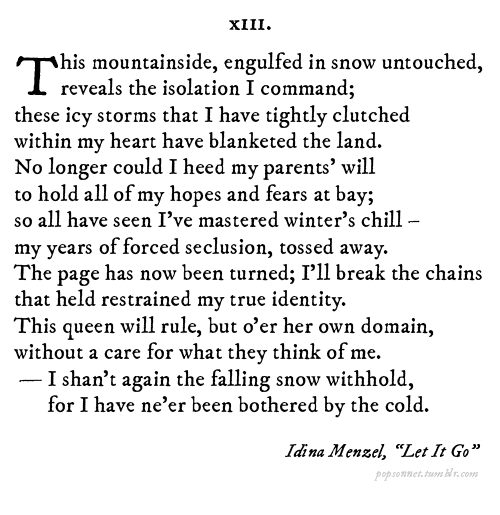
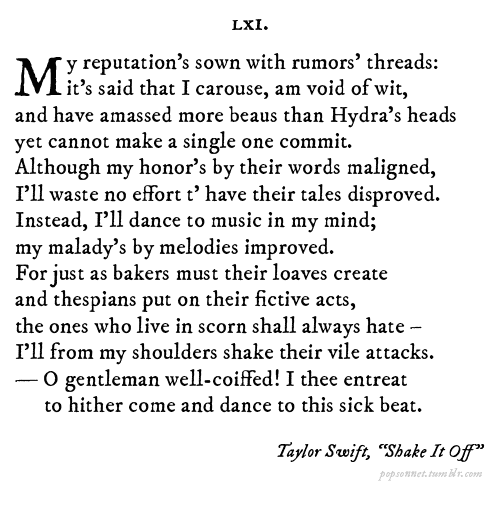
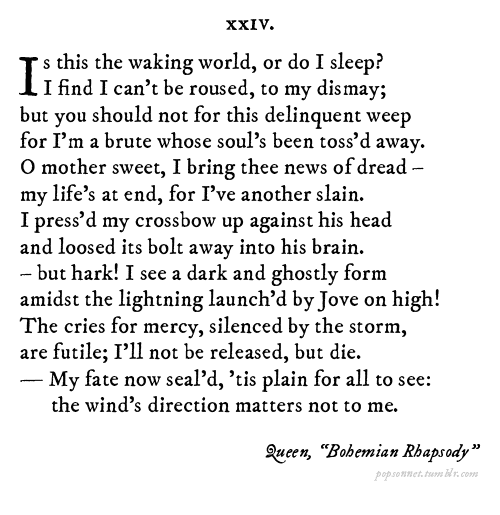
Didriksen did a successful attempt in finding a connection between different generations, constantly separated by modern weapons such as technology and the multimedia world. An excellent incentive to bring younger generations closer to poetry, and to demonstrate to those less passionate about contemporary pop music how the great artists of today still have important and valid content to transmit to their audience. And even more important to remember is that whatever the expression or the metric form used, if it aims at the transmission of emotions and is successful in the attempt, it is not really important to debate on its gender adequacy, because it is always a matter of art.
Traduzione di
Martina Russo





